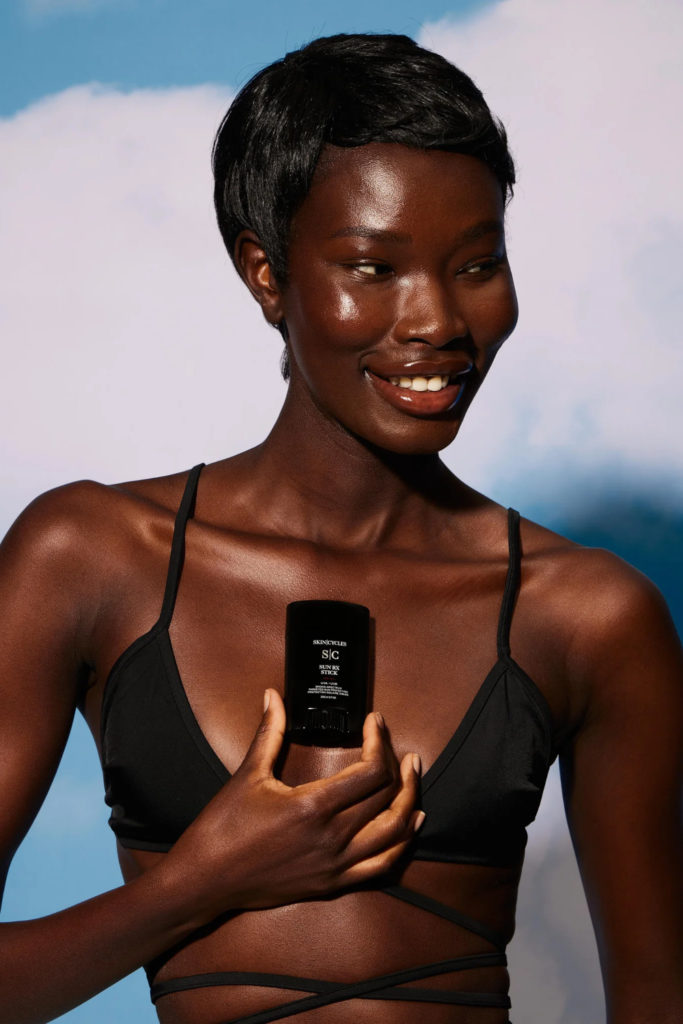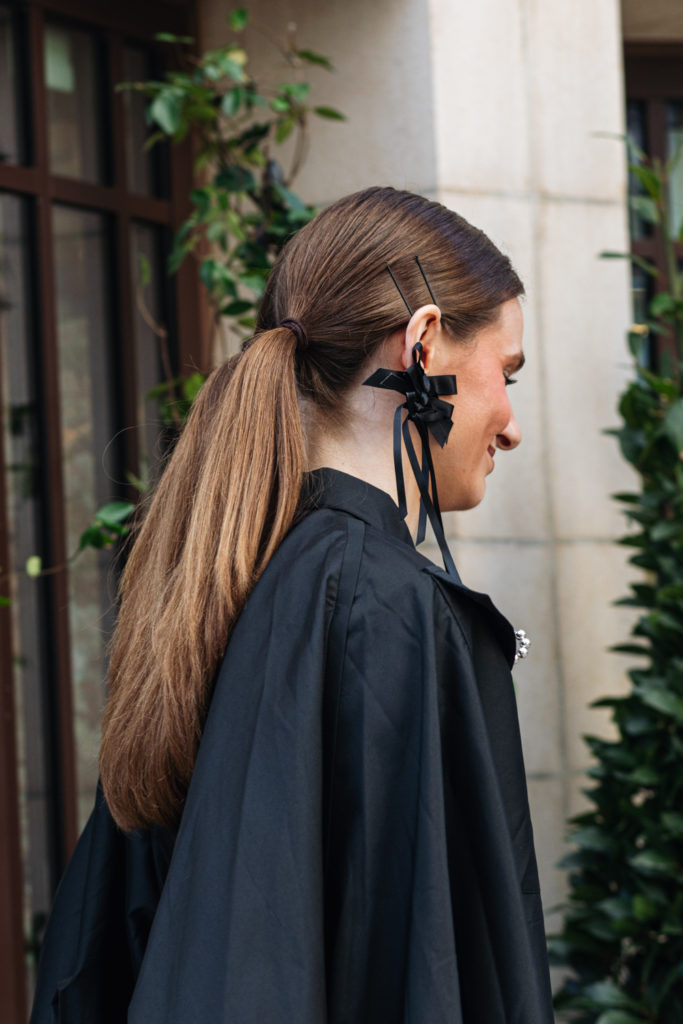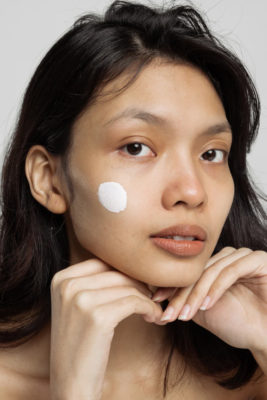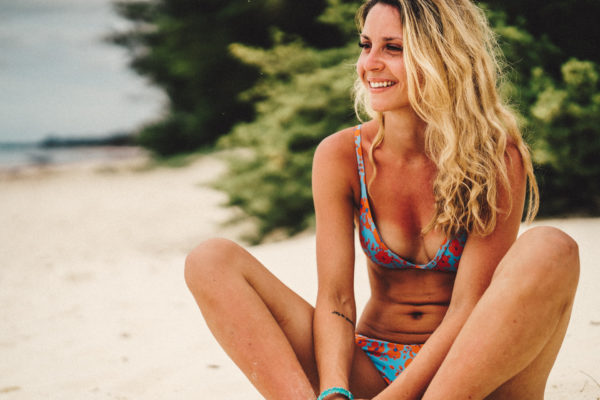Is SPF Cocktailing Bad For Your Skin?
By
2 years ago
This TikTok trend could be leading your skin astray

Yet another trend we have TikTok to thank for, SPF cocktailing is the latest craze that sees influencers mixing SPF products into makeup to create one puddle of bronze-coloured goop to apply to their face. But skincare specialists are suggesting that this ‘hack’ isn’t all it’s cracked up to be – here’s why:
What Is SPF Cocktailing?
‘SPF cocktailing is a new beauty trend that involves mixing your sunscreen with another makeup product such as a bronzer, foundation or concealer and applying this onto your skin as a “cocktail”,’ explains Daniel Isaacs, Director of Research at Medik8. ‘This particular beauty trend started on TikTok, with popular influencers recommending it to their followers – and it has since gone viral. The aim of this method of application is to reduce the amount of white cast that some SPFs can leave on the skin.’
‘It is trending on TikTok at the moment, becoming extremely popular with makeup artists and influencers who are promoting the movement as an easy, 2-in-1 skincare step,’ adds Dr Paris Acharya, a leading aesthetic doctor and facial surgeon. ‘It sounds appealing and saves people time during their morning skincare routine, but it can be detrimental for your skin.’
@drsamskincare Why SPF Cocktailing is NOT a thing #sunscreen #spf #skincare #sunscreentips #skintok #spfcocktail #sunscreenmistakes ♬ original sound – Dr Sam’s Skincare
What Happens When We Mix SPF Products With Our Makeup?
‘When you mix an SPF with your other makeup products such as foundation or concealer you are changing the overall properties of the SPF and diluting the strength of the product,’ says Dr Paris. ‘This will therefore reduce the protection that you will be getting and of course, the higher SPF the better, especially for your face. I always recommend using a broad spectrum sunscreen with SPF30 and above to ensure effective protection and advise reapplication throughout the day to maintain good levels of protection.’
Is It Dangerous To Mix SPF With Makeup?
‘Mixing other products with your sunscreen isn’t directly harmful to the skin, but it can potentially affect the performance of your sunscreen,’ answers Daniel. ‘We don’t recommend mixing other products into your sunscreen, as they are carefully formulated to create a protective shield over the skin. Mixing anything else with your sunscreen can negatively impact the integrity of the sunscreen, potentially altering the way it performs and therefore protects the skin.’
‘It is important to apply a layer of sunscreen to the skin before makeup to ensure that you are fully protecting the skin. Without this and by mixing your products, you are exposing your skin to harmful UV rays which can contribute to problems for your skin such as burning, premature ageing and in worst cases, skin cancer later on in life,’ adds Dr Paris. ‘There may also be certain ingredients within your makeup products (such as oils) that can interfere with the way that your SPF works and by combining the two you may alter the properties to an extent where they could damage your skin.’
In What Order Should We Apply Skincare, SPF & Makeup?
Our experts all seem to agree on the following order: skincare products, SPF products and, finally, makeup products.
‘It is vital to apply your skincare and makeup products in the correct order to ensure that they penetrate the skin properly and work efficiently,’ advises Dr Paris. ‘As a general rule, it is usually recommended that you apply the thinner, lighter products first, followed by those with a heavier consistency. This is because light serums work by penetrating active ingredients into the skin while creams and SPFs work as a protective layer on the skin.
‘Cleanse the skin first and then follow with a toner and serum. Next, apply your moisturiser and then your chosen sunscreen. Always leave a few minutes in between each step to allow each product to fully absorb into the skin. Then continue with your makeup routine.’
‘Establishing a proper skincare routine order is important in understanding your skincare concerns and getting the most benefit from your products,’ agrees Dr Paul Banwell, a cosmetic surgeon and skin cancer expert. ‘Ideally you want to nourish your skin to provide essential nutrients and vitamins, so the order I would recommend people follow is to do their skin care regime, followed by an SPF and then makeup.’
But what about topping up your SPF – how can we reapply over makeup? ‘ When you top up with SPF on top of makeup later in the day, you can use an SPF face mist,’ suggests Dr Paul. ‘A mist is a good option for keeping makeup in place, rather than a cream. I would recommend more frequent application than just every two hours though, as it is likely you won’t be able to apply the recommended amount of 2.5ml for a full face and neck with a mist.’
@dr.tomassianSunscreen mistakes not to make 🤦♂️♬ Massive – Drake
How Often Should We Wear SPF?
‘Every single day! 80 percent of skin ageing is caused by the sun, and this damage doesn’t only happen when it’s sunny,’ emphasises Daniel. ‘In fact, UV rays are able to penetrate through clouds and glass. Therefore, wearing high-strength sun protection every day is fundamental for maintaining a protected, youthful-looking complexion.’
‘I would always advise people to wear SPF no matter what the weather,’ adds Dr Paul. ‘Keep applying this regularly and don’t forget areas such as the scalp, which you can cover with a hat if you prefer. Hands and feet are often areas that are forgotten, so ensure that these receive a high factor SPF too.
‘The NHS recommends an SPF of at least 30 to protect yourself. Personally, I would use SPF 50,’ he continues. ‘Regardless of the SPF, it’s important to apply sunscreen 30 minutes before going outside and to reapply it every two hours or immediately after swimming or sweating. A high SPF should not lead to a false sense of security – it will not protect you from burning. A higher SPF does not mean you need to re-apply it less often. Sunscreens with high SPF ratings block slightly more UVB rays, but none offer 100 percent protection.’
Layering vs Mixing
Daniel maintains that rather than mixing makeup and skincare, the best thing to do is layer your products so they can work to their best ability. ‘Layering skincare is key to getting the very best results from your products, rather than pre-mixing before application,’ he explains. ‘Pre-combined makeup with SPF shouldn’t be relied upon as your only source of sun protection, as it is unlikely that you would apply enough of the product to ensure sufficient UV protection.’
That doesn’t mean you can’t use pre-combined SPF makeup products at all. ‘There are many tinted SPFs out there which combine the two processes together without reducing the efficiency and protection,’ says Dr Paris. ‘There are also many foundations and makeup products that contain SPF within their formula so this could be another option.
‘However, makeup products usually tend to contain a lower SPF than what is generally recommended for staying safe (SPF 30 and above) and you are unlikely to use the correct amount (two full finger lengths) so I would still always recommend that you use an actual SPF or sunscreen underneath your makeup to ensure adequate protection. Many pre-mixed foundations don’t include a broad spectrum SPF as well, so be mindful of what you are using. It is important to use a broad spectrum SPF as it protects you from both UVA and UVB rays which helps the skin to stay youthful and will help to reduce premature ageing and sunspots.’
Feature image: Unsplash







